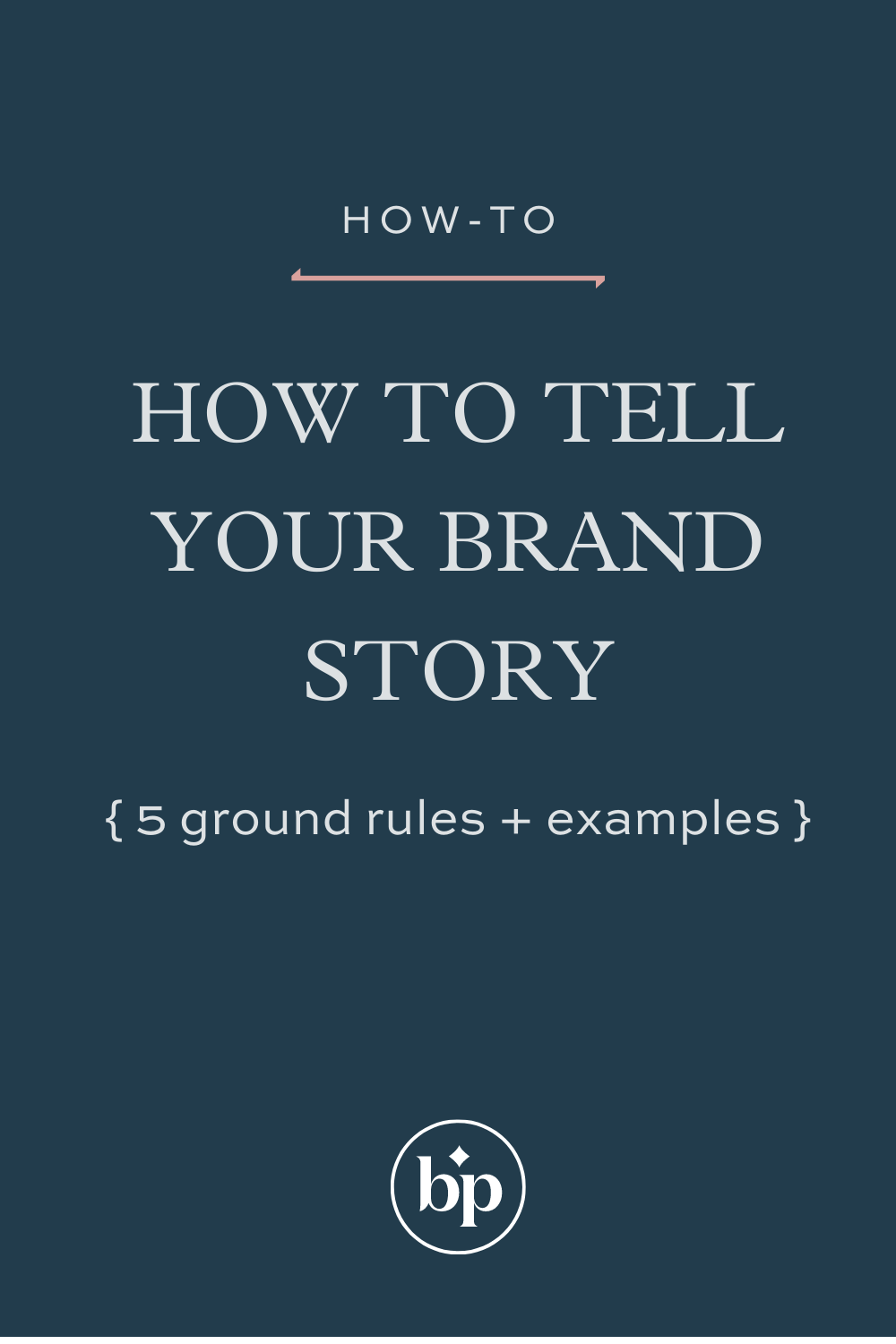“Do I really need a brand story?” is a question I get asked on the regular. And I totally get where you’re coming from if you’re not exactly sure what a brand story is and why it’s important.
A brand story is just a story that helps you and your audience understand where you’re coming from and why you might relate to each other. That’s it.
Now before you start to panic, thinking this is yet another thing you have to learn about in order to successfully market your creative business, let me just say that if you’re a human being, you’re a natural-born storyteller!
Keep reading to learn:
-
What makes a story compelling
-
Who the true focus of your story should be 🙋♀️
-
5 ground rules for telling your brand story
-
Brand story examples from businesses that are doing it right
Why brand storytelling works
Humans are hard-wired to listen to stories. In fact, according to historian Yuval Noah Harari, (author of the riveting book Sapiens,) humans are special because they inhabit an imagined world, created from their own ideas which they take as real.
Businesses that use storytelling to create a world of positive brand associations in our minds are able to create much deeper connections with us than businesses that don’t.
Think about your favorite Super Bowl ad. You’re more likely to remember the ones that caused you to have an emotional connection to the story they were telling, than the ones that simply flashed an image of their product and price on the screen (I’m looking at you, used car lots.)
But the key to telling your brand story is to ALWAYS RELATE IT BACK TO YOUR AUDIENCE.
Whether you’re a product or service-based business, your brand story invites your audience into your world and helps them see how they can be a part of it. It gives them a way to understand why you exist and how your history drives your mission to make the world better/easier/more fun/stronger/ for them.
✍️ The Hero of your story is your audience, not you.
You are just the guide whose job it is to help the hero get to where they want to go.
So how do you get in the right frame of mind to do this?
5 GROUND RULES FOR TELLING YOUR BRAND STORY
1) Know thyself
Without a compelling vision or reason for existing, you’re just a commodity (a very dirty word in the branding world!)
Positioning yourself as a service or product people choose based on convenience and price is a recipe for disaster as it’s all too easy for your competitors to run your prices into the ground.
In order for people to align themselves with you, and come back for your product or services over and over again, they need to know who you are. Which means YOU need to know who you are.
Grab a pen and take two minutes to write out your five brand pillars. The foundation of your entire brand rests on your Purpose, Perception, Personality, Position, and Promotion.
2) Know thy audience
Seriously good brand storytelling (in my well-researched opinion) starts by stepping into your audience’s shoes and figuring out the deeper issues motivating them to seek out your services.
ALERT: MOST PEOPLE ONLY ADDRESS THE EASY-TO-DESCRIBE PROBLEMS FLOATING ON THE SURFACE. Anyone can speak to those. (And everyone does.) You don’t want to sound like a dime-a-dozen solution because then, again, you’re competing on price and convenience alone.
By going two levels deeper, you can write compelling messaging that gets at your audience’s core psychology and speaks to their problems in a way that makes them realize you get them and you can offer them a unique experience unlike anyone else.
Take a peek at the Audience Persona and Brand Messaging Workbook for psychology-based prompts for getting inside your clients’ heads plus, persona building templates to help you uncover your key messaging points.
3) Let people behind the curtain
Invite your audience behind the scenes and be completely transparent about the ups and downs you’re facing in your business. It goes for audiences of big brands and solopreneurs alike that your audience totally knows when you’re only showing them the highlights reel.
When businesses pretend to be infallible or don’t show all the hard work happening behind the scenes, consumers (especially Millennials and Gen Z) are quick to call out brands for posturing.
For generations that grew up surrounded by social media, authenticity, and purpose are key indicators that they can trust a business or brand and will grant you their attention and loyalty (the crown jewels of branding). But you gotta’ be real because it’s almost impossible to win back favor once your audience had moved on to another competitor in your space.
4) Be human
As humans, we crave connection. Part of the reason social media apps like Facebook, Instagram, Twitter, and TikTok are so successful is they allow us to feel connected to people we’ve never met. We create entire online communities based on nothing other than a singular common interest.
The content in these communities is topical and created by humans with nothing but goodwill for the other members of the group. This is why it can be a jarring experience when you’re scrolling through an app and are served up an ad that just feels…off.
The tone is weird, the content is not relevant to you, and the business is reaching into your pocket before they’ve even delivered any value or service.
Don’t be like those ads. Work to understand the kind of community your target audience wants to take part in.
5) Walk the talk
If you’re new to these parts, walking the talk is like the FREE square in a game of Big Picture Bingo. It’s the must-have on your branding game board.
If you serve a particular interest or demographic, you can’t just write out your brand story and call it a day. Your brand story should demonstrate how you value the same things as your audience and then every action, product, post, and campaign needs to carry that story forward and build upon it.
Think about TOMS shoes, for example. While traveling abroad, founder Blake Mycoskie saw the hardships faced by children without shoes. This inspired him to create a for-profit business with giving at its core. The company has grown exponentially, yet, every product, program, campaign, and content output supports their brand story and purpose: being in business to improve lives.
Every element of your brand needs to support your story. If you’re a health and wellness business, your brand photography, packaging, messaging, design, and copy all need to work in harmony to create one consistent brand image and you need to state your ethos and show it in action via your business practices.
One final example for ‘ya: Brands like Aerie don’t just use empowering language cooked up in a marketing meeting. They’ve built an entire body positivity brand story around empowering young women to love and accept their bodies. They use empowering language and business practices like using unretouched photography and models of all shapes and sizes. (I’ll raise a glass to that!)
So now that we’re clear on the ground rules, let’s get you writing!
Hop on over to the followup post: HOW TO WRITE YOUR BRAND STORY.
PIN TO SAVE FOR LATER

